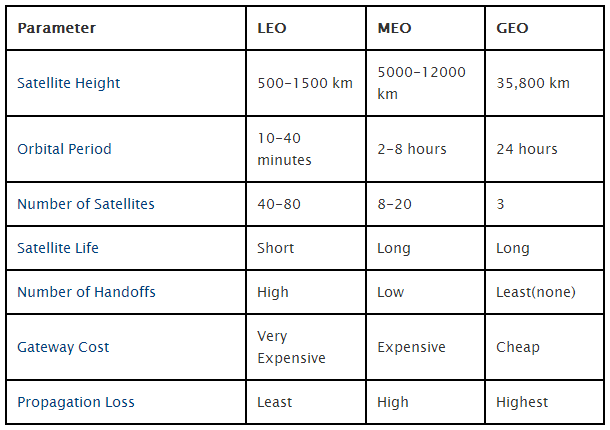LEO os called Low earth orbit, MEO is called Medium Earth Orbit and GEO is called Geostationary orbit. LEO are about 500 Km to 1500 Km above the earth, so the delay is very small and the losses is small too. MEO are installed at 5000 to 12000 km above the earth and generally used for navigation communications like GPS. GEO is about 35800 Km above the equator, the delay and losses are greater, but the advantages is more coverage (it covers 40% of the earth) and there no need to track the satellite, so the earth terminal is cheaper.
See the following figure which describes them nicely

